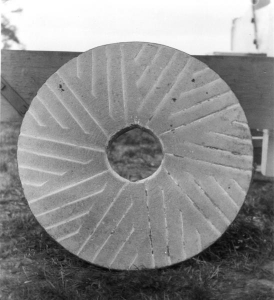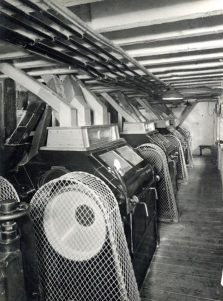History of Roller Milling: Farewell to the Millstone
Farewell to the millstone, its course it has run,
Like a time-worn old servant, its work is nigh done;
No longer the stoneman with sharp bill shall trace
Those parallel lines on its ruddy old face,
No longer the furrows with care shall mark out,
Nor handle the meal rushing down thro’ its spout.

This first stanza of a poem published in various journals, including The Miller and an edition of The Canadian Miller from April 1892, highlights the change that was taking place in the milling industry at the end of the 19th century. The millers were saying farewell to the millstone. Why had this happened and what had replaced this old and trusted friend of the miller? The second stanza reveals the answer:
From the earliest ages that record can trace,
For grinding the grain the millstone held first place;
From the time of the Briton, whose slaves worked the quern,
To the modern mill company’s mammoth concern.
Tho’ now it is banished for rollers of steel,
Fond regard for the millstone we ever shall feel.

Millers were saying hello to ‘rollers of steel’ to deal with the ‘mammoth concern’ of meeting demand and producing the desired product. This desired product was no longer just flour, but a particular type of flour as the final stanza reveals:
Our old friend’s supplanted by rollers, but yet
For things that must be it is vain regret.
Of this new milling system let’s study the plan,
And its ways and its secrets find out if we can;
Till our flour, as of yore, ever be in demand,
And the bakers still cry for the strong and white brand.
Bakers were crying for strong white flour to be able to make white bread which was the demand of the consumer. As can be read about here, this meant a new method of milling was invented, roller milling, and it is this method that is still being used by the industry today.
On the following pages you can read about the history of the roller milling process starting in the 19th century with the early days of innovation in Europe and America. Following that, details can be found about the beginnings of the roller milling industry in other countries and continents of the world as the roller milling revolution spread worldwide.
Sources:
The Canadian Miller, April 1892, p.3.

